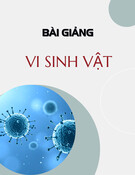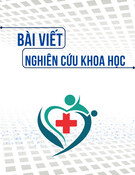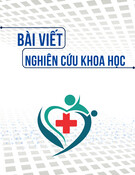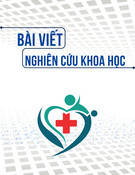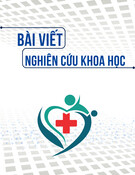
E26 I CUTIS®WWW.MDEDGE.COM/DERMATOLOGY
CLINICAL REVIEW
Acne vulgaris is a common condition that routinely affects females of
childbearing age. Taking into consideration the reproductive journey
of women when treating acne is of paramount importance given the
safety concerns to both the mother and the fetus associated with
certain medications. Therefore, careful consideration of therapeutic
choices during pregnancy is crucial. Herein, we summarize the safety
of acne treatments during pregnancy and offer practical clinical
pearls for routine dermatology practice.
Cutis. 2024;113:E26-E32.
Acne vulgaris, or acne, is a highly common inflam-
matory skin disorder affecting up to 85% of the
population, and it constitutes the most com-
monly presenting chief concern in routine dermatology
practice.1 Older teenagers and young adults are most
often affected by acne.2 Although acne generally is more
common in males, adult-onset acne occurs more fre-
quently in women.2,3 Black and Hispanic women are at
higher risk for acne compared to those of Asian, White, or
Continental Indian descent.4 As such, acne is a common
concern in all women of childbearing age.
Concerns for maternal and fetal safety are important
therapeutic considerations, especially because hormonal
and physiologic changes in pregnancy can lead to onset
of inflammatory acne lesions, particularly during the
second and third trimesters.5 Female patients younger
than 25 years; with a higher body mass index, prior
irregular menstruation, or polycystic ovary syndrome;
or those experiencing their first pregnancy are thought
to be more commonly affected.5-7 In fact, acne affects up
to 43% of pregnant women, and lesions typically extend
beyond the face to involve the trunk.6,8-10 Importantly,
one-third of women with a history of acne experience
symptom relapse after disease-free periods, while two-
thirds of those with ongoing disease experience symptom
deterioration during pregnancy.10 Although acne is not
a life-threatening condition, it has a well-documented,
detrimental impact on social, emotional, and psychologi-
cal well-being, namely self-perception, social interactions,
quality-of-life scores, depression, and anxiety.11
Therefore, safe and effective treatment of pregnant
women is of paramount importance. Because pregnant
women are not included in clinical trials, there is a paucity
Acne and Pregnancy: A Clinical
Review and Practice Pearls
Marita Yaghi, MD; Daniela Baboun, BA; Jonette E. Keri, MD, PhD
Drs. Yaghi and Keri are from the Dr. Phillip Frost Department of Dermatology and Cutaneous Surgery, University of Miami Miller School of Medicine,
Florida. Dr. Keri also is from Dermatology Service, Miami VA Hospital, Florida. Daniela Baboun is from Herbert Wertheim College of Medicine, Florida
International University, Miami.
Dr. Yaghi and Daniela Baboun report no conflict of interest. Dr. Keri is on the advisory board for Ortho Dermatologics, has received research funding
from Galderma, and has received honoraria from Merck Manuals.
Correspondence: Jonette E. Keri, MD, PhD, University of Miami Miller School of Medicine, 1600 NW 10th Ave, RSMB Room 2023A, Miami,
FL 33136 (jkeri@med.miami.edu).
doi:10.12788/cutis.0951
PRACTICE POINTS
• The management of acne in pregnancy requires
careful consideration of therapeutic choices to
guarantee the safety of both the mother and the
developing fetus.
• The use of topicals should be observed as first-
line therapy, but consideration for systemic therapy
in cases of treatment failure or more severe disease
is warranted.
• Discussion of patient expectations and involving them
in decision-making for therapeutic choice is crucial.
Copyright Cutis 2024. No part of this publication may be reproduced, stored, or transmitted without the prior written permission of the Publisher.
CUTIS Do not copy

ACNE AND PREGNANCY
VOL. 113 NO. 1 I JANUARY 2024 E27
WWW.MDEDGE.COM/DERMATOLOGY
of medication safety data, further augmented by inef-
ficient access to available information. The US Food and
Drug Administration (FDA) pregnancy safety categories
were updated in 2015, letting go of the traditional A, B,
C, D, and X categories.12 The Table reviews the current
pregnancy classification system. In this narrative review,
we summarize the most recent available data and recom-
mendations on the safety and efficacy of acne treatment
during pregnancy.
Topical Treatments for Acne
Benzoyl Peroxide—Benzoyl peroxide commonly is used
as first-line therapy alone or in combination with other
agents for the treatment of mild to moderate acne.13 It
is safe for use during pregnancy.14 Although the medi-
cation is systemically absorbed, it undergoes complete
metabolism to benzoic acid, a commonly used food addi-
tive.15,16 Benzoic acid has low bioavailability, as it gets
rapidly metabolized by the kidneys; therefore, benzoyl
peroxide is unlikely to reach clinically significant levels in
the maternal circulation and consequently the fetal circu-
lation. Additionally, it has a low risk for causing congeni-
tal malformations.17
Salicylic Acid—For mild to moderate acne, salicylic
acid is a second-line agent that likely is safe for use
by pregnant women at low concentrations and over
limited body surface areas.14,18,19 There is minimal sys-
temic absorption of the drug.20 Additionally, aspirin,
which is broken down in the body into salicylic acid, is
used in low doses for the treatment of pre-eclampsia dur-
ing pregnancy.21
Dapsone—The use of dapsone gel 5% as a second-line
agent has shown efficacy for mild to moderate acne.22
The oral formulation, commonly used for malaria and
leprosy prophylaxis, has failed to show associated fetal
toxicity or congenital anomalies.23,24 It also has been
used as a first-line treatment for dermatitis herpetiformis
in pregnancy.25 Although the medication likely is safe,
it is better to minimize its use during the third trimester
to reduce the theoretical risk for hyperbilirubinemia in
the neonate.17,26-29
Azelaic Acid—Azelaic acid effectively targets non-
inflammatory and inflammatory acne and generally is
well tolerated, harboring a good safety profile.30 Topical
20% azelaic acid has localized antibacterial and comedo-
lytic effects and is safe for use during pregnancy.31,32
Glycolic Acid—Limited data exist on the safety of
glycolic acid during pregnancy. In vitro studies have
shown up to 27% systemic absorption depending on
pH, concentration, and duration of application.33 Animal
reproductive studies involving rats have shown fetal mul-
tisystem malformations and developmental abnormali-
ties with oral administration of glycolic acid at doses far
exceeding those used in humans.34 Although no human
reproductive studies exist, topical glycolic acid is unlikely
to reach the developing fetus in notable amounts, and the
medication is likely safe for use.17,35
Clindamycin—Topical clindamycin phosphate is an
effective and well-tolerated agent for the treatment of
mild to moderate acne.36 Its systemic absorption is mini-
mal, and it is considered safe for use during all trimesters
of pregnancy.14,17,26,27,35,37
Erythromycin—Topical erythromycin is another com-
monly prescribed topical antibiotic used to target mild
to moderate acne. However, its use recently has been
associated with a decrease in efficacy secondary to the
rise of antibacterial resistance in the community.38-40
Nevertheless, it remains a safe treatment for use during
all trimesters of pregnancy.14,17,26,27,35,37
Topical Retinoids—Vitamin A derivatives (also known
as retinoids) are the mainstay for the treatment of mild to
moderate acne. Limited data exist regarding pregnancy
outcomes after in utero exposure.41 A rare case report
suggested topical tretinoin has been associated with
fetal otocerebral anomalies.42 For tazarotene, teratogenic
effects were seen in animal reproductive studies at doses
exceeding maximum recommended human doses.41,43
However, a large meta-analysis failed to find a clear risk
for increased congenital malformations, spontaneous
abortions, stillbirth, elective termination of pregnancy,
low birthweight, or prematurity following first-trimester
FDA Pregnancy Labeling for Drugs
Discontinued PLLR as of 201512
A: No risk in first, second,
or third trimester
(Drug name) is not
absorbed systemically
following (route of
administration) and
maternal use is not
expected to result in fetal
exposure to the drug
B: No risk in second or third
trimester; first trimester studies
not available
C: Human data not
available, animal studies
adverse fetal effects
OR
Risk summary including:
D: Evidence of human fetal risk 1. Risk statement based
on human dataa
X: Contraindicated 2. Risk statement based
on animal dataa
3. Risk statement based
on pharmacology
4. Background risk
information in general
populationa
5. Background risk
information in disease
population
Abbreviations: FDA, US Food and Drug Administration;
PLLR, Pregnancy and Lactation Labeling Rule.
aRequired information.
Copyright Cutis 2024. No part of this publication may be reproduced, stored, or transmitted without the prior written permission of the Publisher.
CUTIS Do not copy

ACNE AND PREGNANCY
E28 I CUTIS®WWW.MDEDGE.COM/DERMATOLOGY
exposure to topical retinoids.44 As the level of exposure
that could lead to teratogenicity in humans is unknown,
avoidance of both tretinoin and tazarotene is recom-
mended in pregnant women.41,45 Nevertheless, women
inadvertently exposed should be reassured.44
Conversely, adapalene has been associated with
1 case of anophthalmia and agenesis of the optic chiasma
in a fetus following exposure until 13 weeks’ gestation.46
However, a large, open-label trial prior to the patient
transitioning from adapalene to over-the-counter treat-
ment showed that the drug harbors a large and reassuring
margin of safety and no risk for teratogenicity in a maxi-
mal usage trial and Pregnancy Safety Review.47 Therefore,
adapalene gel 0.1% is a safe and effective medication for
the treatment of acne in a nonprescription environment
and does not pose harm to the fetus.
Clascoterone—Clascoterone is a novel topical antian-
drogenic drug approved for the treatment of hormonal
and inflammatory moderate to severe acne.48-51 Human
reproductive data are limited to 1 case of pregnancy that
occurred during phase 3 trial investigations, and no adverse
outcomes were reported.51 Minimal systemic absorption
follows topical use.52 Nonetheless, dose-independent mal-
formations were reported in animal reproductive studies.53
As such, it remains better to avoid the use of clascoterone
during pregnancy pending further safety data.
Minocycline Foam—Minocycline foam 4% is approved
to treat inflammatory lesions of nonnodular moderate
to severe acne in patients 9 years and older.54 Systemic
absorption is minimal, and the drug has limited bio-
availability with minimal systemic accumulation in the
patient’s serum.55 Given this information, it is unlikely
that topical minocycline will reach notable levels in the
fetal serum or harbor teratogenic effects, as seen with
the oral formulation.56 However, it may be best to avoid
its use during the second and third trimesters given the
potential risk for tooth discoloration in the fetus.57,58
Systemic Treatments for Acne
Isotretinoin—Isotretinoin is the most effective treatment
for moderate to severe acne with a well-documented
potential for long-term clearance.59 Its use during preg-
nancy is absolutely contraindicated, as the medication is a
well-known teratogen. Associated congenital malforma-
tions include numerous craniofacial defects, cardiovas-
cular and neurologic malformations, or thymic disorders
that are estimated to affect 20% to 35% of infants exposed
in utero.60 Furthermore, strict contraception use during
treatment is mandated for patients who can become
pregnant. It is recommended to wait at least 1 month
and 1 menstrual cycle after medication discontinuation
before attempting to conceive.17 Pregnancy termination
is recommended if conception occurs during treatment
with isotretinoin.
Spironolactone—Spironolactone is an androgen-
receptor antagonist commonly prescribed off label
for mild to severe acne in females.61,62 Spironolactone
promotes the feminization of male fetuses and should be
avoided in pregnancy.63
Doxycycline/Minocycline—Tetracyclines are the most
commonly prescribed oral antibiotics for moderate to
severe acne.64 Although highly effective at treating acne,
tetracyclines generally should be avoided in pregnancy.
First-trimester use of doxycycline is not absolutely con-
traindicated but should be reserved for severe illness and
not employed for the treatment of acne. However, acci-
dental exposure to doxycycline has not been associated
with congenital malformations.65 Nevertheless, after the
15th week of gestation, permanent tooth discoloration
and bone growth inhibition in the fetus are serious and
well-documented risks.14,17 Additional adverse events
following in utero exposure include infantile inguinal
hernia, hypospadias, and limb hypoplasia.63
Sarecycline—Sarecycline is a novel tetracycline-class
antibiotic for the treatment of moderate to severe inflam-
matory acne. It has a narrower spectrum of activity
compared to its counterparts within its class, which
translates to an improved safety profile, namely when
it comes to gastrointestinal tract microbiome disruption
and potentially decreased likelihood of developing bacte-
rial resistance.66 Data on human reproductive studies are
limited, but it is advisable to avoid sarecycline in preg-
nancy, as it may cause adverse developmental effects in
the fetus, such as reduced bone growth, in addition to the
well-known tetracycline-associated risk for permanent
discoloration of the teeth if used during the second and
third trimesters.67,68
Erythromycin—Oral erythromycin targets moderate to
severe inflammatory acne and is considered safe for use
during pregnancy.69,70 There has been 1 study reporting
an increased risk for atrial and ventricular septal defects
(1.8%) and pyloric stenosis (0.2%), but these risks are
still uncertain, and erythromycin is considered compat-
ible with pregnancy.71 However, erythromycin estolate
formulations should be avoided given the associated
10% to 15% risk for reversible cholestatic liver injury.72
Erythromycin base or erythromycin ethylsuccinate formu-
lations should be favored.
Systemic Steroids—Prednisone is indicated for severe
acne with scarring and should only be used during
pregnancy after clearance from the patient’s obstetrician.
Doses of 0.5 mg/kg or less should be prescribed in combi-
nation with systemic antibiotics as well as agents for bone
and gastrointestinal tract prophylaxis.29
Zinc—The exact mechanism by which zinc exerts
its effects to improve acne remains largely obscure. It
has been found effective against inflammatory lesions
of mild to moderate acne.73 Generally recommended
dosages range from 30 to 200 mg/d but may be associ-
ated with gastrointestinal tract disturbances. Dosages of
75 mg/d have shown no harm to the fetus.74 When taking
this supplement, patients should not exceed the recom-
mended doses given the risk for hypocupremia associated
with high-dose zinc supplementation.
Copyright Cutis 2024. No part of this publication may be reproduced, stored, or transmitted without the prior written permission of the Publisher.
CUTIS Do not copy

ACNE AND PREGNANCY
VOL. 113 NO. 1 I JANUARY 2024 E29
WWW.MDEDGE.COM/DERMATOLOGY
Light-Based Therapies
Phototherapy—Narrowband UVB phototherapy is effec-
tive for the treatment of mild to moderate acne.75 It has
been proven to be a safe treatment option during preg-
nancy, but its use has been associated with decreased
folic acid levels.76-79 Therefore, in addition to attaining
baseline folic acid serum levels, supplementation with
folic acid prior to treatment, as per routine prenatal
guidelines, should be sought.80
AviClear—The AviClear (Cutera) laser is the first
device cleared by the FDA for mild to severe acne in
March 2022.81 The FDA clearance for the Accure (Accure
Acne Inc) laser, also targeting mild to severe acne, fol-
lowed soon after (November 2022). Both lasers harbor a
wavelength of 1726 nm and target sebaceous glands with
electrothermolysis.82,83 Further research and long-term
safety data are required before using them in pregnancy.
Other Therapies
Cosmetic Peels—Glycolic acid peels induce epidermoly-
sis and desquamation.84 Although data on use during
pregnancy are limited, these peels have limited dermal
penetration and are considered safe for use in preg-
nancy.33,85,86 Similarly, keratolytic lactic acid peels har-
bor limited dermal penetration and can be safely used
in pregnant women.87-89 Salicylic acid peels also work
through epidermolysis and desquamation84; however,
they tend to penetrate deeper into the skin, reaching
down to the basal layer, if large areas are treated or when
applied under occlusion.86,90 Although their use is not
contraindicated in pregnancy, they should be limited to
small areas of coverage.91
Intralesional Triamcinolone—Acne cysts and inflamma-
tory papules can be treated with intralesional triamcino-
lone injections to relieve acute symptoms such as pain.92
Low doses at concentrations of 2.5 mg/mL are considered
compatible with pregnancy when indicated.29
Approaching the Patient Clinical Encounter
In patients seeking treatment prior to conception, a few
recommendations can be made to minimize the risk for
acne recurrence or flares during pregnancy. For instance,
because data show an association between increased
acne severity in those with a higher body mass index and
in pregnancy, weight loss may be recommended prior
to pregnancy to help mitigate symptoms after concep-
tion.7 The Figure summarizes our recommendations for
approaching and treating acne in pregnancy.
In all patients, grading the severity of the patient’s
acne as mild, moderate, or severe is the first step. The
presence of scarring is an additional consideration during
the physical examination and should be documented. A
Part 1:
Assessment
& Treatment
Acne Physical
Examination
Comedones +/–
<10 inflammatory
papules/pustules
Mild to moderate
acne
No response
First line: Monotherapy
• Nonabrasive washes (benzoyl peroxide, glycolic acid)
• Topical azelaic acid
• Topical clindamycin phosphate
Second line: Combination/Switching of first-line treatments
listed above
Moderate to
severe acne
≥10 Inflammatory
papules/pustules
+/– inflammatory nodules
First line: May be combined with nonabrasive washes
or topical agents
• Oral cephalexin, cefadroxil, or amoxicillin
• Penicillin allergy: oral erythromycin (avoid erythromycin
estolate formulations) or azithromycin
Second line:
• Consider switching oral antibiotic
(For the choices below, consider combining with first-line
antibiotics above)
• Oral prednisone (20–40 mg tapered over 2–4 wk)
• Intralesional triamcinolone (for isolated severely inflamed lesion)
Part 2:
Counseling
• Discuss expectations with patients
• Discuss risks/benefits and document the discussion
• Reinforce the importance of sunscreen use
• Cautious intake of acne-targeting supplements
• Explain the need for follow-up after delivery, especially if
the patient is planning to breastfeed
An algorithm-based approach for the management of acne during pregnancy.
Copyright Cutis 2024. No part of this publication may be reproduced, stored, or transmitted without the prior written permission of the Publisher.
CUTIS Do not copy

ACNE AND PREGNANCY
E30 I CUTIS®WWW.MDEDGE.COM/DERMATOLOGY
careful discussion of treatment expectations and prognosis
should be the focus before treatment initiation. Meticulous
documentation of the physical examination and discussion
with the patient should be prioritized.
To minimize toxicity and risks to the developing fetus,
monotherapy is favored. Topical therapy should be con-
sidered first line. Safe regimens include mild nonabra-
sive washes, such as those containing benzoyl peroxide
or glycolic acid, or topical azelaic acid or clindamycin
phosphate for mild to moderate acne. More severe cases
warrant the consideration of systemic medications as
second line, as more severe acne is better treated with
oral antibiotics such as the macrolides erythromycin or
clindamycin or systemic corticosteroids when concern
exists for severe scarring. The additional use of physical
sunscreen also is recommended.
An important topic to address during the clini-
cal encounter is cautious intake of oral supplements
for acne during pregnancy, as they may contain
harmful and teratogenic ingredients. A recent search
focusing on acne supplements available online
between March and May 2020 uncovered 49 differ-
ent supplements, 26 (53%) of which contained
vitamin A.93 Importantly, 3 (6%) of these 49 supple-
ments were likely teratogenic, 4 (8%) contained vitamin
A doses exceeding the recommended daily nutritional
intake level, and 15 (31%) harbored an unknown
teratogenic risk. Furthermore, among the 6 (12%)
supplements with vitamin A levels exceeding 10,000 IU,
2 lacked any mention of pregnancy warning, including
the supplement with the highest vitamin A dose found
in this study.93 Because dietary supplements are not
subject to the same stringent regulations by the FDA as
drugs, inadvertent use by unaware patients ought to be
prevented by careful counseling and education.
Finally, patients should be counseled to seek care
following delivery for potentially updated medication
management of acne, especially if they are breastfeeding.
Co-management with a pediatrician may be indicated
during lactation, particularly when newborns are born
preterm or with other health conditions that may warrant
additional caution with the use of certain agents.
REFERENCES
1. Bhate K, Williams H. Epidemiology of acne vulgaris. Br J Dermatol.
2013;168:474-485.
2. Heng AHS, Chew FT. Systematic review of the epidemiology of acne
vulgaris. Sci Rep. 2020;10:5754.
3. Fisk WA, Lev-Tov HA, Sivamani RK. Epidemiology and management of
acne in adult women. Curr Dermatol Rep. 2014;3:29-39.
4. Perkins A, Cheng C, Hillebrand G, et al. Comparison of the
epidemiology of acne vulgaris among Caucasian, Asian, Continental
Indian and African American women. J Eur Acad Dermatol Venereol.
2011;25:1054-1060.
5. Yang CC, Huang YT, Yu CH, et al. Inflammatory facial acne during
uncomplicated pregnancy and post‐partum in adult women: a prelimi-
nary hospital‐based prospective observational study of 35 cases from
Taiwan. J Eur Acad Dermatol Venereol. 2016;30:1787-1789.
6. Dréno B, Blouin E, Moyse D, et al. Acne in pregnant women: a French
survey. Acta Derm Venereol. 2014;94:82-83.
7. Kutlu Ö, Karadag˘ AS, Ünal E, et al. Acne in pregnancy: a prospec-
tive multicenter, cross‐sectional study of 295 patients in Turkey. Int J
Dermatol. 2020;59:1098-1105.
8. Hoefel IDR, Weber MB, Manzoni APD, et al. Striae gravidarum, acne,
facial spots, and hair disorders: risk factors in a study with 1284 puer-
peral patients. J Pregnancy. 2020;2020:8036109.
9. Ayanlowo OO, Otrofanowei E, Shorunmu TO, et al. Pregnancy
dermatoses: a study of patients attending the antenatal clinic at two
tertiary care centers in south west Nigeria. PAMJ Clin Med. 2020;3.
10. Bechstein S, Ochsendorf F. Acne and rosacea in pregnancy. Hautarzt.
2017;68:111-119.
11. Habeshian KA, Cohen BA. Current issues in the treatment of acne
vulgaris. Pediatrics. 2020;145(suppl 2):S225-S230.
12. Content and format of labeling for human prescription drug and
biological products; requirements for pregnancy and lactation labeling
(21 CFR 201). Fed Regist. 2014;79:72064-72103.
13. Sagransky M, Yentzer BA, Feldman SR. Benzoyl peroxide: a review of its
current use in the treatment of acne vulgaris. Expert Opin Pharmacother.
2009;10:2555-2562.
14. Murase JE, Heller MM, Butler DC. Safety of dermatologic medications
in pregnancy and lactation: part I. Pregnancy. J Am Acad Dermatol.
2014;70:401.e1-401.e14; quiz 415.
15. Wolverton SE. Systemic corticosteroids. Comprehensive Dermatol
Drug Ther. 2012;3:143-168.
16. Kirtschig G, Schaefer C. Dermatological medications and local thera-
peutics. In: Schaefer C, Peters P, Miller RK, eds. Drugs During Pregnancy
and Lactation. 3rd edition. Elsevier; 2015:467-492.
17. Pugashetti R, Shinkai K. Treatment of acne vulgaris in pregnant
patients. Dermatol Ther. 2013;26:302-311.
18. Touitou E, Godin B, Shumilov M, et al. Efficacy and tolerability of
clindamycin phosphate and salicylic acid gel in the treatment of mild to
moderate acne vulgaris. J Eur Acad Dermatol Venereol. 2008;22:629-631.
19. Schaefer C, Peters PW, Miller RK, eds. Drugs During Pregnancy and
Lactation: Treatment Options and Risk Assessment. 2nd ed. Academic
Press; 2014.
20. Birmingham B, Greene D, Rhodes C. Systemic absorption of topical
salicylic acid. Int J Dermatol. 1979;18:228-231.
21. Trivedi NA. A meta-analysis of low-dose aspirin for prevention of pre-
eclampsia. J Postgrad Med. 2011;57:91-95.
22. Lucky AW, Maloney JM, Roberts J, et al. Dapsone gel 5% for the treat-
ment of acne vulgaris: safety and efficacy of long-term (1 year) treat-
ment. J Drugs Dermatol. 2007;6:981-987.
23. Nosten F, McGready R, d’Alessandro U, et al. Antimalarial drugs in
pregnancy: a review. Curr Drug Saf. 2006;1:1-15.
24. Brabin BJ, Eggelte TA, Parise M, et al. Dapsone therapy for malaria dur-
ing pregnancy: maternal and fetal outcomes. Drug Saf. 2004;27:633-648.
25. Tuffanelli DL. Successful pregnancy in a patient with dermatitis herpeti-
formis treated with low-dose dapsone. Arch Dermatol. 1982;118:876.
26. Meredith FM, Ormerod AD. The management of acne vulgaris in preg-
nancy. Am J Clin Dermatol. 2013;14:351-358.
27. Kong Y, Tey H. Treatment of acne vulgaris during pregnancy and lacta-
tion. Drugs. 2013;73:779-787.
28. Leachman SA, Reed BR. The use of dermatologic drugs in pregnancy
and lactation. Dermatol Clin. 2006;24:167-197.
29. Ly S, Kamal K, Manjaly P, et al. Treatment of acne vulgaris during preg-
nancy and lactation: a narrative review. Dermatol Ther. 2023;13:115-130.
30. Webster G. Combination azelaic acid therapy for acne vulgaris. J Am
Acad Dermatol. 2000;43:S47-S50.
31. Archer CB, Cohen SN, Baron SE. Guidance on the diagnosis and clinical
management of acne. Clin Exp Dermatol. 2012;37(suppl 1):1-6.
32. Graupe K, Cunliffe W, Gollnick H, et al. Efficacy and safety of topical
azelaic acid (20 percent cream): an overview of results from European
clinical trials and experimental reports. Cutis. 1996;57(1 suppl):20-35.
33. Bozzo P, Chua-Gocheco A, Einarson A. Safety of skin care products
during pregnancy. Can Fam Physician. 2011;57:665-667.
34. Munley SM, Kennedy GL, Hurtt ME. Developmental toxicity study of
glycolic acid in rats. Drug Chem Toxicol. 1999;22:569-582.
35. Chien AL, Qi J, Rainer B, et al. Treatment of acne in pregnancy. J Am
Board Fam Med. 2016;29:254-262.
Copyright Cutis 2024. No part of this publication may be reproduced, stored, or transmitted without the prior written permission of the Publisher.
CUTIS Do not copy











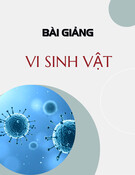
![Bài giảng Vi sinh vật: Đại cương về miễn dịch và ứng dụng [chuẩn nhất]](https://cdn.tailieu.vn/images/document/thumbnail/2025/20251124/royalnguyen223@gmail.com/135x160/49791764038504.jpg)
